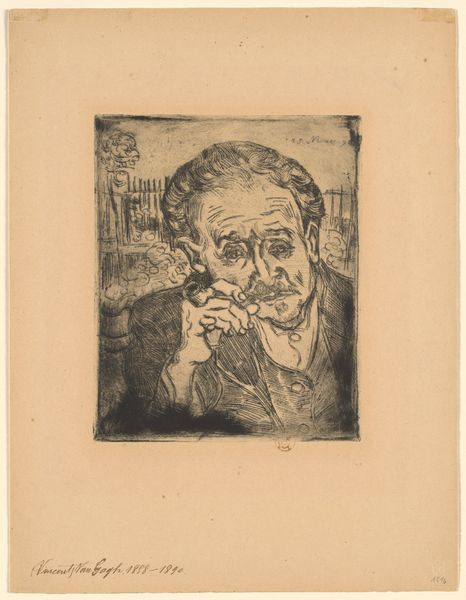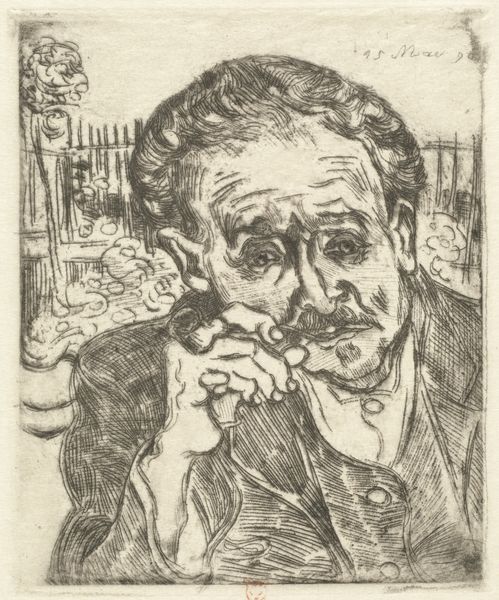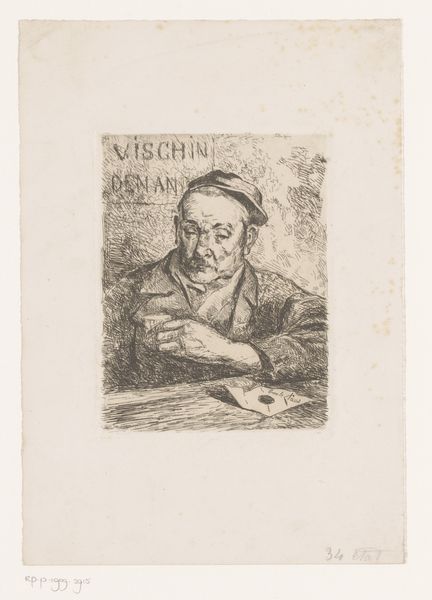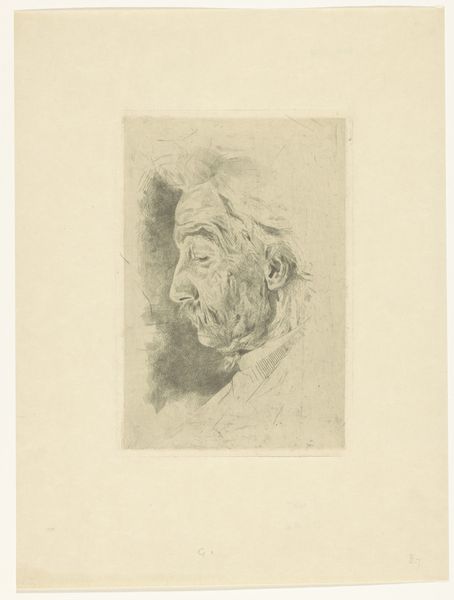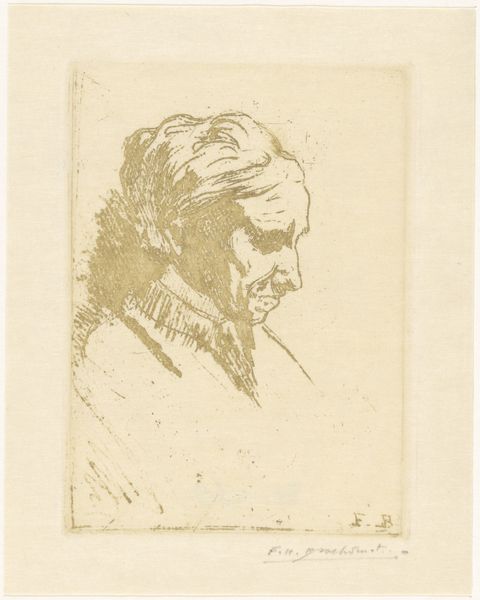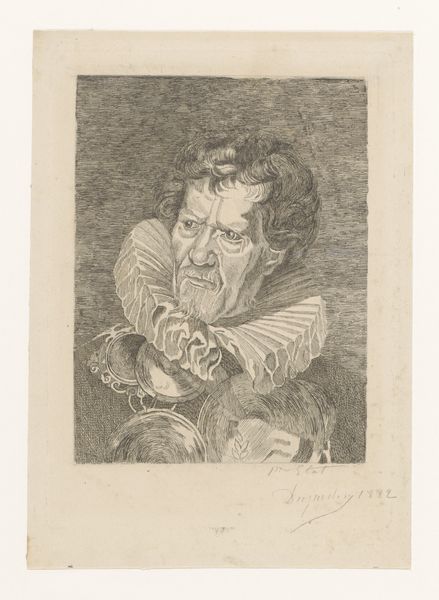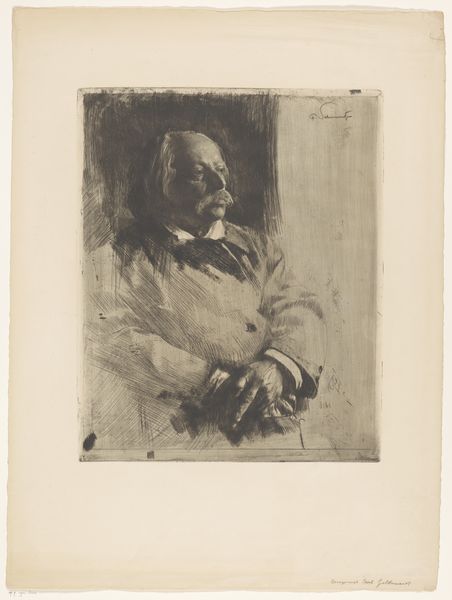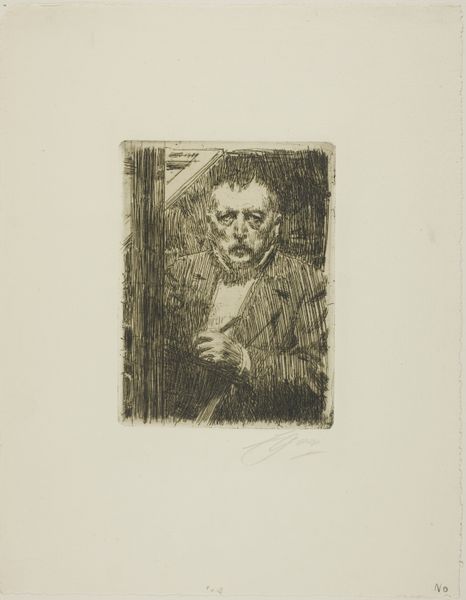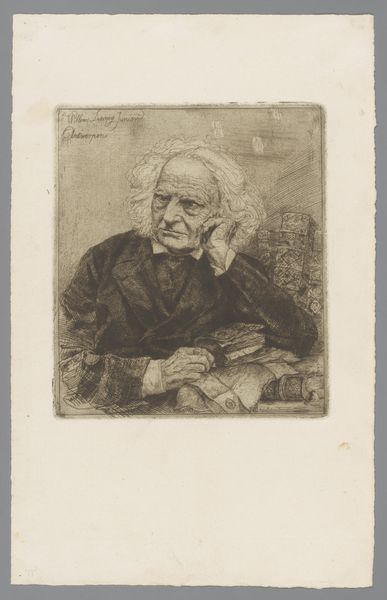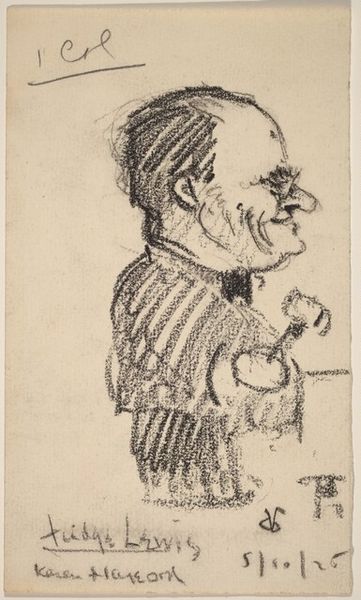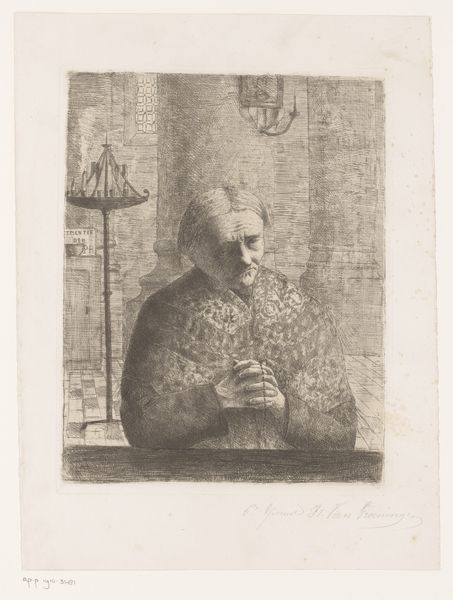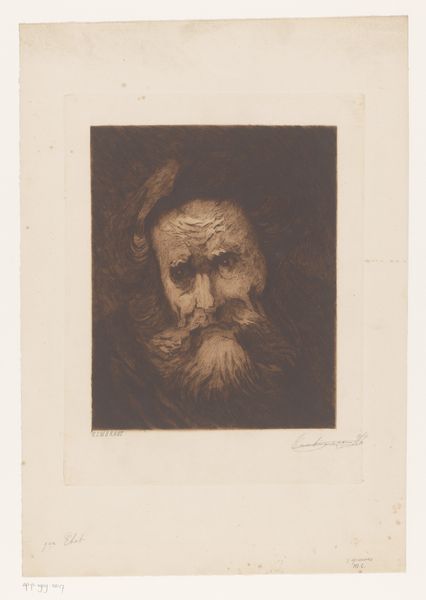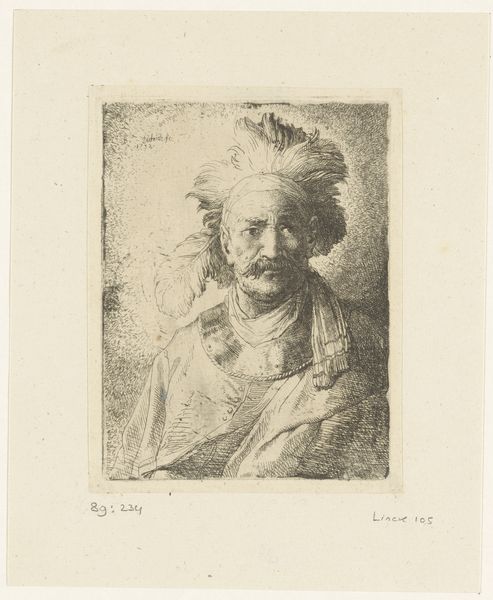
drawing, print, etching
#
portrait
#
drawing
# print
#
etching
#
etching
#
post-impressionism
Copyright: Public Domain
Curator: Here we have Vincent van Gogh's "Portrait of Dr. Gachet," dating to around 1890 to 1900. It's an etching, a print, a drawing rendered with an incredible density of line. Editor: There's something so profoundly melancholic in this portrayal. The doctor’s eyes, the set of his mouth—it all speaks of a deep weariness. You feel he is carrying the world on his shoulders. Curator: Absolutely. It’s a remarkable rendering of inner emotional turmoil. Van Gogh created this likeness of Dr. Paul Gachet, the physician who cared for him during the artist’s final months, but it’s so much more than just a straightforward record. Editor: It speaks volumes, especially when considered through the lens of the era’s limited mental healthcare, doesn’t it? Gachet was himself an amateur artist and collector of impressionist art. In a way, he embodies the nascent understanding of psychology during that period, a blend of empathy and a search for understanding. It also reminds us how deeply class and social role could shape these types of portraits. Who gets to be "cared for", and how, depended very much on where you were in the social pecking order at that time. Curator: It becomes almost a doubling—the artist seeing himself reflected in his physician. Note the downward cast of his features: Van Gogh captured his sitter’s perceived mental state so convincingly. Editor: Right. You can't separate it from Van Gogh’s struggles, his bouts with mental illness. What did Van Gogh expect, or perhaps hope to gain, from this connection? Was he seeking someone who simply sympathized or actively sought to cure his condition? Curator: Perhaps a bit of both. Through Gachet's weary countenance, a whole complex history of illness, caregiving, and the blurred line between doctor and patient gets drawn into sharp relief, no? Editor: It certainly seems to push at all sorts of raw nerves about the very nature of treatment and healing, even today. A striking piece with so many complicated layers to it. Curator: Indeed. And one which gives new dimension to seeing with psychological eyes, something Van Gogh was particularly gifted at rendering.
Comments
No comments
Be the first to comment and join the conversation on the ultimate creative platform.
